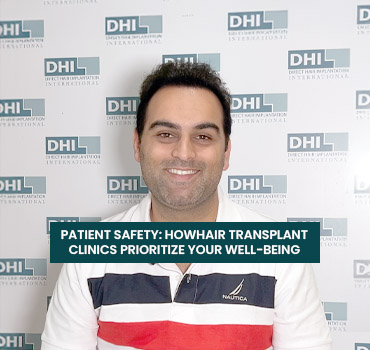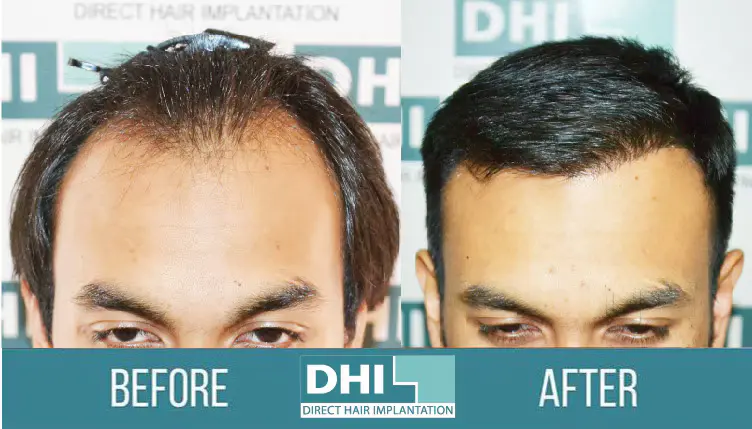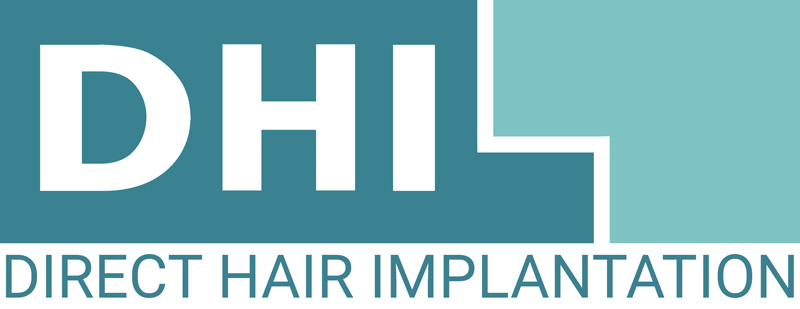Patient Safety: How Hair Transplant Clinics Prioritize Your Well-Being


A hair transplant can noticeably improve how you look and feel. However, treating it as a simple cosmetic procedure is a mistake. The treatment involves your scalp, carries surgical risks, and demands clinical precision, sterile equipment, and medical supervision.
That’s why you have to look beyond hair transplant costs when choosing a clinic. A lower price might seem attractive, but it often comes at the cost of safety. Without strict protocols in place, you could face infections, scarring, or unnatural hair growth.
In this article, you’ll learn how the best hair transplant clinics in India prioritize patient safety and why those practices should matter more than anything else when making your decision.
Questions to Ask Before Choosing the Best Hair Transplant Clinic
Every hair replacement clinic promises great results, but not all of them follow safe, medical-grade procedures. Asking these questions can help you avoid clinics that prioritize profit over patient care and safety.
- Is the procedure performed entirely by licensed medical professionals?
- What training do the technicians assisting the doctor have?
- What infection control measures are followed in the clinic?
- Can you show before-and-after photos of actual patients?
- What steps are taken to ensure natural-looking hair transplant results?
- How is patient data handled and stored?
- Is there emergency care or ICU backup in case of complications?
- What does the aftercare plan include?
What Sets the Top Hair Transplant Clinics Apart in Terms of Safety
Top hair transplant clinics in India, like DHI™, put patient safety over everything else. At these clinics, every step, from diagnostics to recovery, is backed by medical expertise and strict protocols. Here’s what sets them apart:
1. Qualified Surgeons and Medical Staff
At reputable clinics, the entire procedure is performed by qualified surgeons, not technicians or assistants. This ensures that every step, including anesthesia administration, extraction, and implantation, is done with full accountability.
DHI™ clinics follow a strict doctor-only protocol. Every procedure is performed end-to-end by trained and certified surgeons in hair replacement from the London Hair Restoration Training Academy (LHRTA). No part of the transplant is delegated to non-medical staff.
2. Pre-Procedure Checks and Diagnostics
Top clinics assess your medical history and perform diagnostic tests before recommending a transplant. This helps avoid unnecessary procedures and ensures you’re medically fit.
DHI™ uses a proprietary diagnostic system, UDSA (Unique Diagnostic System for Alopecia), which evaluates ten types of alopecia. It includes a dermatological exam, psychological assessment, donor-recipient analysis, and a mathematical graft count. This ensures accurate planning and safe outcomes.
3. In-Procedure Safety Practices
The actual procedure must adhere to clinical standards, from the administration of local anesthesia to the handling of the graft. Poor practices can damage follicles or cause long-term scalp trauma.
At DHI™, anesthesia is administered only by certified doctors. The clinics utilize the sharpest precision instrument, the DHI™ Implanter Pen, developed specifically for minimal tissue trauma. Each graft is handled under strict follicle care protocols to preserve survival and quality.
4. Post-Procedure Care
Proper postoperative care can significantly impact your healing and overall results. At reliable clinics like DHI™, you can expect structured follow-ups. The verified graft count is also shared with each patient. You receive clear aftercare instructions, medication schedules, and direct access to medical guidance for faster recovery and optimal results.
5. Emergency Protocols
Hair transplant clinics must be prepared for emergencies. This includes basic resuscitation support and a clear risk management protocol. At DHI™ clinics, every procedure room is equipped with an emergency kit. Doctors follow a defined emergency response process to manage any unexpected complications safely and swiftly.
6. Cleanliness and Sterilization Protocols
The infection risk is highest when instruments are reused, or hygiene practices are poor. Trusted clinics like DHI™ use high-grade, single-use titanium-coated instruments that are destroyed after each session. Every tool is imported, precision-designed, and never reused. This eliminates any risk of contamination.
7. Hair Transplant Results and Testimonials
A clinic’s claims should be backed by real outcomes. Always ask for verified patient stories, before-and-after photos, and graft survival data.
DHI™ shares documented results and verified DHI hair transplant results, showing a graft survival rate of over 90%. To ensure full transparency, each step is recorded and shared with the patient, from planning to outcome.
Final Thoughts
Choosing the best hair transplant clinic is a serious medical decision. Your scalp is a sensitive, living tissue, and any procedure done on it needs the same level of care as any medical treatment.
The DHI™ method utilizes direct graft implantation, eliminating the need for cuts or stitches. It offers a 90% graft survival rate and causes minimal trauma to the scalp. Every DHI™ clinic adheres to strict safety protocols, including the use of single-use instruments, trained medical staff, and a fully sanitized operating setup. The DHI™ website also displays real DHI hair transplant before and after results to help you understand what safe and effective treatment looks like.
Choose a clinic that puts your safety first and delivers medically sound outcomes. Explore certified DHI™ clinics near you and book a consultation today!
